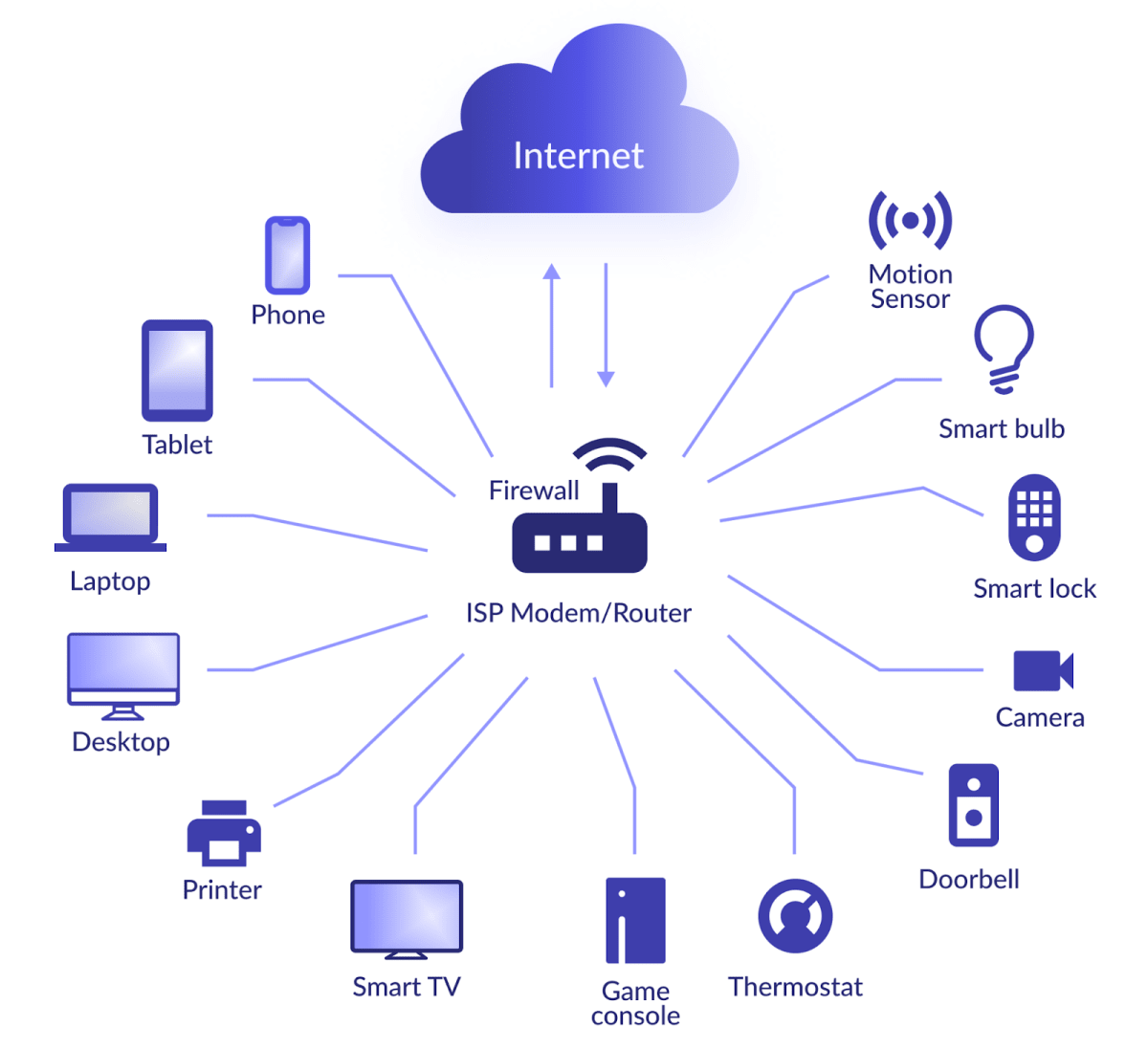🤖 AI-Generated Content
This content has been created using artificial intelligence. While we strive for accuracy, please verify important information independently.
Imagine all the smart gadgets around your home and office – the ones that talk to each other, stream movies, or even help you keep an eye on things when you're away. These handy items, often called Internet of Things or IoT devices, bring a lot of comfort and connection to our daily routines, yet they also open up new avenues for digital visitors, some of whom might not have the best intentions.
Just like your computer needs a guardian to watch over its connections, these smaller, sometimes less obvious devices also benefit from a watchful eye. It's about making sure only the right kind of information comes in and goes out, keeping your personal space truly private and secure, you know.
We're going to chat about how a special kind of protector, a firewall, works with these IoT devices to stand guard, almost like a friendly bouncer at a club, making sure only invited guests get through the door, in a way.
- Kelly Paniagua Net Worth
- Cailee Spaeny Nude
- Judy Blooms Instagram Age
- Jameliz Benitez Leaked
- The Real Carly Jane Leaks
Table of Contents
- What is a Firewall and How Does it Protect Your IoT Devices?
- Why Do Your Smart Gadgets Need a Firewall?
- How Does a Firewall for IoT Devices Actually Work?
- What Happens When a Firewall is Not Active on Your IoT Devices?
- Setting Up and Managing Your Firewall for IoT Devices
- Allowing Specific Apps or Connections Through Your IoT Device Firewall
- Troubleshooting Common Firewall for IoT Devices Issues
- The Future of Firewall for IoT Devices Security
What is a Firewall and How Does it Protect Your IoT Devices?
Think of a firewall as a very watchful security person for your digital belongings. This digital helper stands at the entrance of your device's connection to the internet, carefully looking at all the incoming and outgoing network chatter. Its main job is to keep out anything that looks suspicious or isn't supposed to be there, so, you know, it's pretty important.
It's like having someone at the door of your home, checking the ID of every person who wants to come in or leave. If someone doesn't have the right credentials, or seems like they're up to no good, they just don't get through. This is how a firewall helps keep your smart things safe, by filtering network activity and stopping unwanted entry, it's almost like a tiny digital fortress.
This filtering process helps lower the chances of bad things happening, like someone trying to sneak into your smart thermostat or your internet-connected security camera. By either stopping or permitting specific types of connections, the firewall acts as a shield, making sure only the good stuff gets through to your IoT devices, and that's really what we want, isn't it?
It's not just about stopping bad guys, though. A firewall also helps manage what your devices send out. Sometimes, a device might accidentally try to send information it shouldn't, or connect to a place it doesn't need to. The firewall can catch these attempts too, giving you a bit more peace of mind about your smart home's conversations, in some respects.
For your IoT devices, which might not have big screens or easy ways to see what's going on, this unseen protector is especially useful. It works quietly in the background, making sure your smart lightbulbs, door locks, and voice assistants are only talking to the right places, and that's a pretty big deal, actually.
Why Do Your Smart Gadgets Need a Firewall?
You might wonder why those little smart plugs or even your fancy smart fridge would need a digital guardian. Well, every device that connects to the internet, no matter how small, becomes a potential doorway into your home network. Without something watching that doorway, it's a bit like leaving your front door wide open for anyone to walk in, or so it seems.
These IoT devices often have simpler systems than your computer or phone, which can sometimes make them easier targets for people with bad intentions. They might not have the same built-in protections you find in bigger gadgets. So, a firewall adds an extra layer of defense, giving those smaller items the same kind of protection your main computer gets, or even better, you know.
The goal is to lessen the chances of digital threats. By putting limits on what can come in or go out, the firewall makes it harder for unwanted visitors to get a foothold. It's about keeping your personal information and your home's digital security intact, which is a big deal when so many things are connected, is that not right?
Consider your smart camera. You want it to send video to your phone, but you definitely don't want someone else to peek in. A firewall helps make sure only your phone, or the approved cloud service, can connect to that camera. It helps separate the good traffic from the questionable traffic, keeping your private moments private, and that's something we all want, pretty much.
So, even if a device seems simple, like a smart light switch, it's still part of your home network. A firewall helps protect that entire network by making sure each connected item is playing by the rules. It's a way to keep your whole connected living space safer, and that's a good feeling, honestly.
How Does a Firewall for IoT Devices Actually Work?
At its heart, a firewall for your IoT devices works by checking the details of every piece of data that tries to move in or out. It looks at things like the internet address (IP address) where the data is coming from or going to, the specific "doorway" or port it's trying to use, and even the type of program or service that's sending or receiving it. It's quite a thorough process, you see.
Imagine a digital checklist. When a piece of information tries to get through, the firewall compares it to a set of rules you or the device's maker have put in place. If the information matches a rule that says "allow," it goes through. If it matches a rule that says "block," it's stopped right there. It's a very simple concept, but incredibly effective, in fact.
For example, if your smart speaker only needs to talk to its music streaming service, the firewall can be set up to only allow connections to that specific internet address and port. Any other attempts to connect to or from that speaker would be blocked. This greatly reduces the places where someone could try to sneak in, or so it seems.
Sometimes, firewalls can even be set up to watch for patterns of activity that look suspicious, even if they don't match a specific "bad" address. This kind of smart watching helps catch new threats that haven't been specifically identified yet. It's a way of being proactive, which is always a good thing, you know.
The core idea is to create a controlled environment for your IoT devices. Instead of them being completely open to the internet, they operate within a defined boundary, letting only necessary communications happen. This makes them much less appealing targets for those who might want to misuse them, and that's a very helpful thing, pretty much.
What Happens When a Firewall is Not Active on Your IoT Devices?
When a firewall isn't doing its job for your IoT devices, it's a bit like leaving your house with the doors unlocked and the windows open. Your devices become
Additional Resources
Visual Content



Disclaimer: This content was generated using AI technology. While every effort has been made to ensure accuracy, we recommend consulting multiple sources for critical decisions or research purposes.
